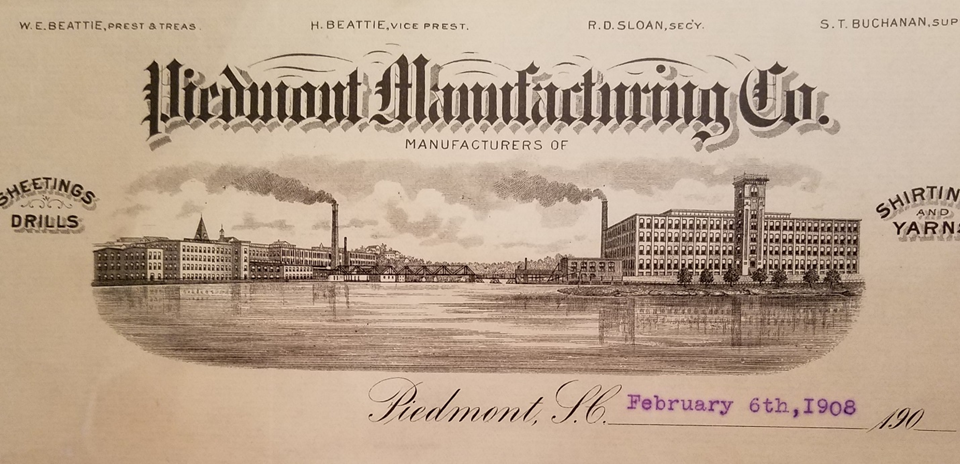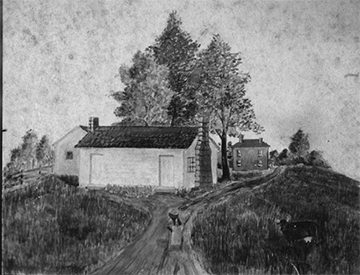Thanks to Judy Bainbridge for the fine article on the history of Piedmont recently! Much is happening in downtown, so I wanted to share a little about the area prior to the mill.
Moonville Mae says Piedmont is Hot!
Much of the history of Piedmont, South Carolina, situated in the rolling hills of the upstate along the Saluda River, is focused on the river itself. Tradition suggests that Saluda was the name of a Shawnee tribe that traveled through the foothills before the settlers. According to Dora Lee Chappelear in a high school paper written in 1921 and titled, Piedmont, Her Past and Present, early arrow points, possibly Clovis points, were found around the Wesleyan Church and many on the Osteen Place. The fishing here was once famous, and the Big Shoals of the Saluda, as the Natives called it, was the best ford for many miles. Chappelear also noted that two Indian trails could still be found leading from Osteen’s to Mr. R.L. Simpson’s home and then to Cherokee County.
One of the most interesting camps at the shoals was a small Tory fort during the Revolution. In 1780 this encampment was documented in an account by Major Samuel Hammond. Colonel Elijah Clarke, a group of Georgia Revolutionaries, and Hammond’s force moved on a Loyalist fort at Colonel Hoil’s old establishment on the Saluda. Marching through the night, they reached the post at daylight, but the enemy had vacated moving down the river to Rutledge’s ford in Abbeville County. There Clarke and others, including Hammond’s men, skirmished over the river with several men killed on both sides. Returning to Hoil’s old place seventeen or eighteen miles north, part of the Georgia group led by Colonel Twiggs rested before heading back west. This story was shared recently by kayaker, Ken Allen, who passed the battle marker in Abbeville County and being a native Piedmonter, realized that the fort must have been at Garrison Shoals.
An infamous happening at the Big Shoals is the ambush of the Sherriff of Washington District (Greenville, Anderson, Pickens, and Oconee) in November of 1797. Robert Maxwell was appointed sheriff in 1795, and after an altercation over a slander that Captain Maxwell perceived by a Dr. Joshua Kennedy, the Captain was ambushed as he attempted to cross the Saluda on his way to court in Pickensville. Although Dr. Kennedy was purported to be in Georgia at the time of the incident, he was tried for the assassination. This is discussed at length in A History on the Upper Part of Greenville County South Carolina by Mann Batson.
As settlers moved north into Indian Territory (Washington District) after the Treaty of DeWitt’s Corner on May 20, 1777, one attracted to the Big Shoals was Revolutionary War soldier, David Garrison, who moved into Greenville County in 1790. Before 1843 he had established a log cabin and Grist mill there, which was run by Zion Turner and later by a Mr. Langston according to Chappelear.
Among many traditions, Historian Judy Bainbridge suggests that Silas Trowbridge who moved into the Grove Station area from Abbeville County with several members of his wife’s family, the Nesbitt’s of Fairview, may have been the instigator of the construction of a cotton mill at what was then called Garrison Shoals. He may have suggested the site to Henry Pinckney Hammett. Hammett had come from Laurens County near the Nesbitt’s of Fairview and the area in Abbeville that was Trowbridge’s home. They worked together with many others to make Hammett’s dream of a large cotton mill come true. Hammett found the money to start the building process, and when the Civil War and the Panic of 1873 threatened to drown his dream in the Saluda, he persevered never giving up. He found ways to overcome by firing his own brick, cutting the needed lumber, building an iron works, bringing craftsmen, engineers, architects and workers into the dream.
Piedmont Manufacturing Company’s first sheeting sold in 1876.

This letterhead dated 1908 shows the complete cotton mill complex with 4 factories and the footbridge spanning the Saluda River.
By the time Mr. H.P. Hammett died in 1891, Piedmont Manufacturing Company was one of the largest textile mills in the world. Holding on to his dream helped establish the South, and Greenville especially, as the Textile Center of the World.
Time to remember those who came before, Moonville Mae (Anne Peden)♦


